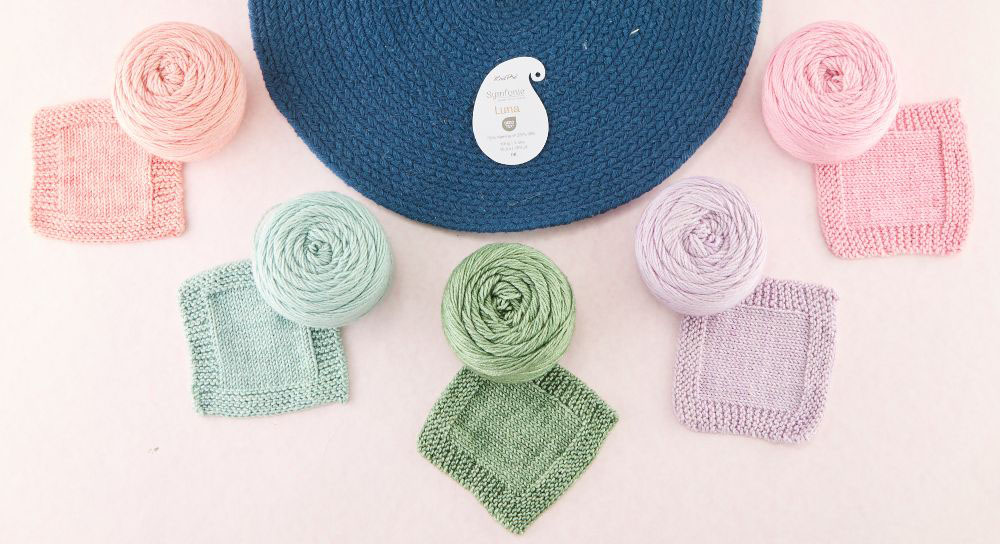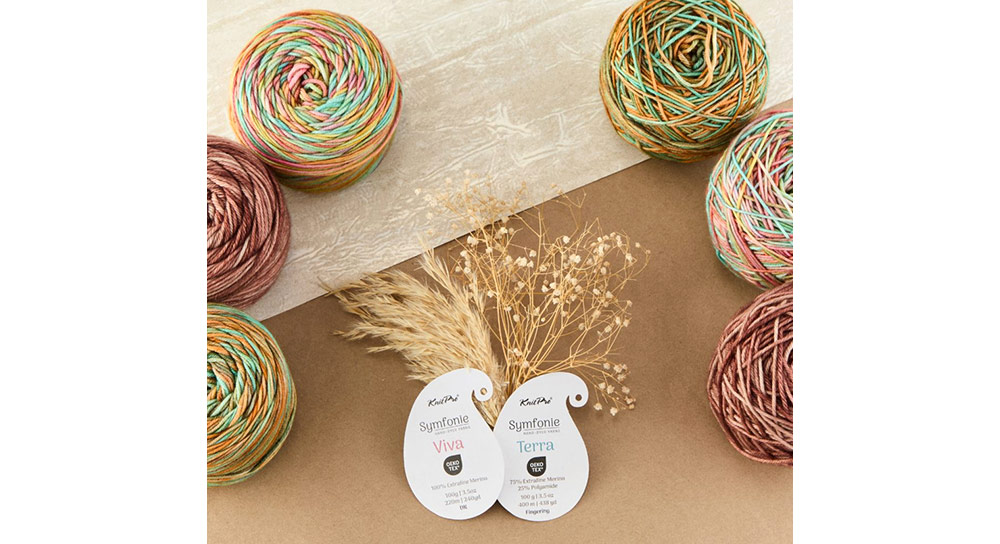Complete Guide to Reading Yarn Labels: Decoding the Symbols
- Blog Views : 1208
- Symfonie Yarns
- 12Aug, 2025

Have you ever looked at a yarn label and felt confused by the tiny symbols and technical terms? You're not alone! A yarn skein’s identity is summarized in the label so that you can recognize the yarn anytime and include it in your projects. The yarn label symbols hold essential information about the yarn’s weight, fiber content, care instructions, and even the recommended knitting needle sizes or crochet hook sizes. If you’re working with hand-dyed yarns or specialty fibers, understanding these symbols is crucial for choosing the right materials and tools for your project.
In this guide, we’ll walk you through what each section of a yarn label means and how to use that information to create stunning, successful projects.
What’s Included on a Yarn Label?
A yarn label (often called a yarn band or package wrap) isn’t just decorative—it’s your key to understanding the yarn inside. Here are the most common details you’ll find:
- Brand and yarn name
- Fiber content
- Yarn weight classification
- Recommended knitting needle and crochet hook size
- Gauge or tension
- Yardage (or length per skein)
- Dye lot and colorway
- Care instructions
Let’s break these down so you can make the most of your next yarn purchase.

1. Brand and Yarn Name
This is usually the most visible information on the label. It includes the manufacturer’s name and the yarn’s collection name or number. For example, Symfonie Yarns offers several premium hand-dyed yarns like Viva, Luna, Terra, and Bella, each with unique fiber blends and applications.
2. Yarn Weight Category
Yarn weight refers to how thick or thin the yarn is, which influences how the fabric drapes and the type of projects it's suited for. Yarn weight is typically represented by both a name and a number (0–7). Here’s a quick overview:
| Weight |
Number |
Common Uses |
|
Lace |
0 |
Shawls, doilies |
|
Super Fine |
1 |
Socks, baby garments |
|
Fine- Fingering Weight |
2 |
Lightweight sweaters |
|
Light – DK (double knit) |
3 |
Baby blankets, cardigans |
|
Medium – Worsted Weight |
4 |
Hats, scarves, warm sweaters |
|
Bulky |
5 |
Thick wraps, throws |
|
Super Bulky |
6 |
Chunky scarves, rugs |
|
Jumbo |
7 |
Oversized blankets, dramatic accessories |
Also read - Complete Guide to Yarn Weight and Sizes
3. Fiber Content
This section tells you what the yarn is made from. Understanding fiber types helps you choose yarn based on softness, warmth, durability, or drape.
- Merino wool is soft, warm, and breathable ideal for garments. Try Viva by Symfonie Yarns for beautiful stitch definition in cozy knits.
- Merino-silk blends like Luna offer extra sheen and drape, perfect for elegant shawls.
- Merino-polyamide blends like Terra add strength, making them great for socks or everyday wear.
4. Yardage and Weight
This tells you how much yarn (in meters or yards) you get in each skein and how much it weighs (grams or ounces). This information is essential when planning how much yarn to buy for a project.
For example, if a pattern requires 800 meters of DK yarn, and your yarn label says each skein contains 200 meters, you’ll need 4 skeins.
5. Gauge or Tension
Gauge is the number of stitches and rows you’ll get in a standard swatch (usually 10x10 cm or 4x4 inches), using the recommended knitting needle or crochet hook size.
Checking gauge is essential as it ensures your finished project matches the intended size. Always make a gauge swatch before starting your project and adjust your needle or hook size if needed.
6. Recommended Needle and Hook Sizes
Look for tiny diagrams or numbers indicating the best knitting needle size and crochet hook size for that yarn. This helps you match the right tool to the yarn’s thickness.
For example:
- A medium weight yarn (4) may recommend 4.5–5.5 mm knitting needles or a 5.5 mm crochet hook.
- A lace weight yarn (0) might need 2 mm needles or a 1.5–2 mm crochet hook.
Always compare this with your pattern’s gauge requirements for best results.
7. Care Instructions
These are often shown as laundry symbols, letting you know how to wash, dry, or iron the yarn. For hand-dyed or natural fiber yarns, gentle hand washing and flat drying are usually recommended.
To maintain color vibrancy and prevent felting:
- Avoid hot water or wringing.
- Use a mild detergent.
- Store in a cool, dry place away from direct sunlight.
Also read: Yarn Care and Storage: Keep Your Precious Fibers Vibrant
8. Color
Each yarn skein has a name. A vibrant red shade such as Rose, a bright neon or a variegated colorway, the yarn label carries a name. Hand-dyed yarns from Symfonie Yarns are prized for their rich shades may add charm to your piece!
Understanding yarn labels and their symbols helps you make informed decisions, avoid project mistakes, and ensure better results. From selecting the right yarn weight and fiber content to choosing the proper knitting needle size or crochet hook size, every detail on that label serves a purpose.
So next time you pick up a skein of colorful yarn take a moment to decode the label. It’s your guide to crafting success!
-
- 04 Nov,2025
-
- 29 Oct,2025
-
- 24 Oct,2025
-
- 14 Oct,2025
-
- 10 Oct,2025
-
- 06 Oct,2025
Copyright © Symfonie Yarns 2025 - all rights reserved | RSS Feed
